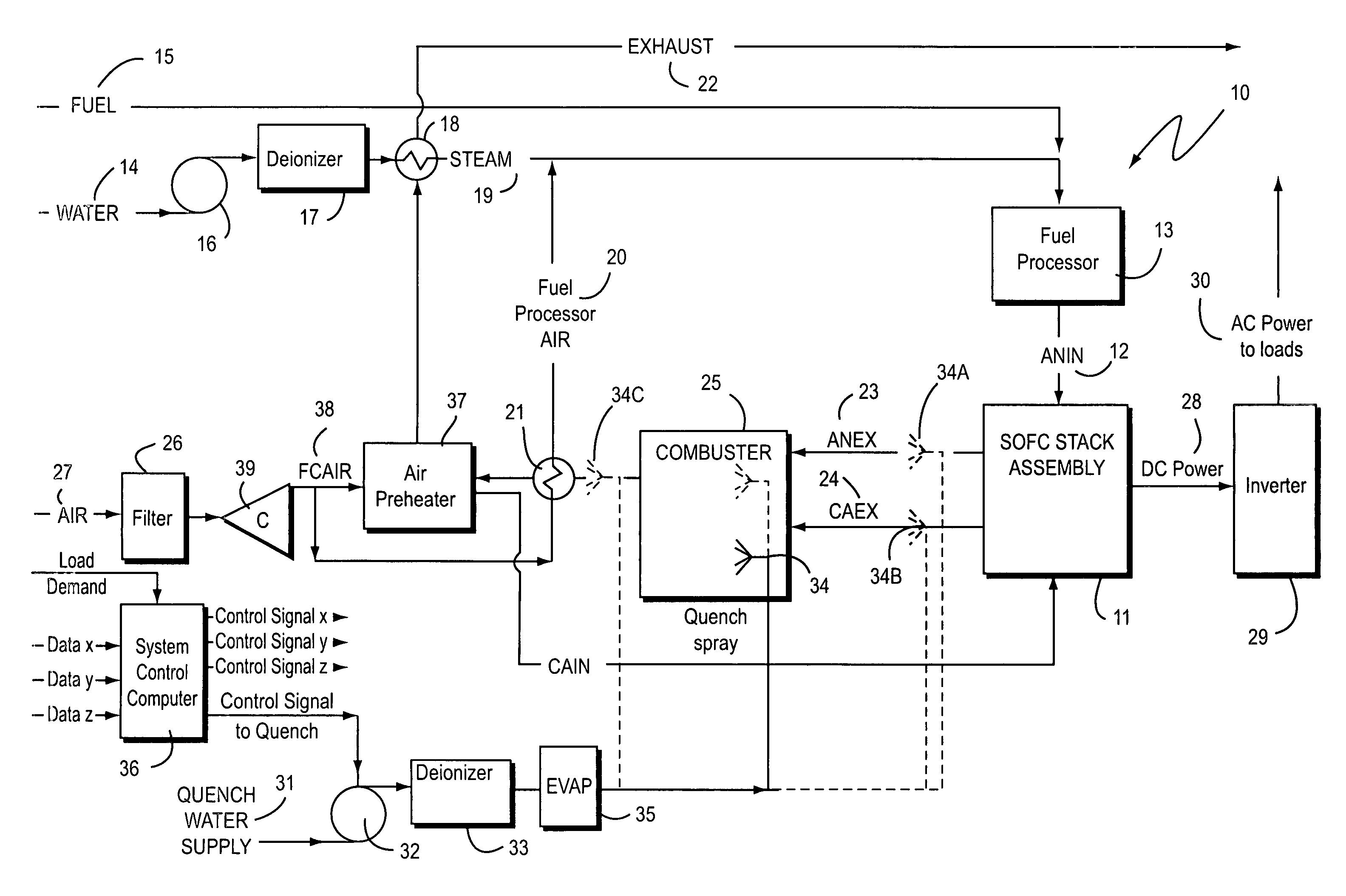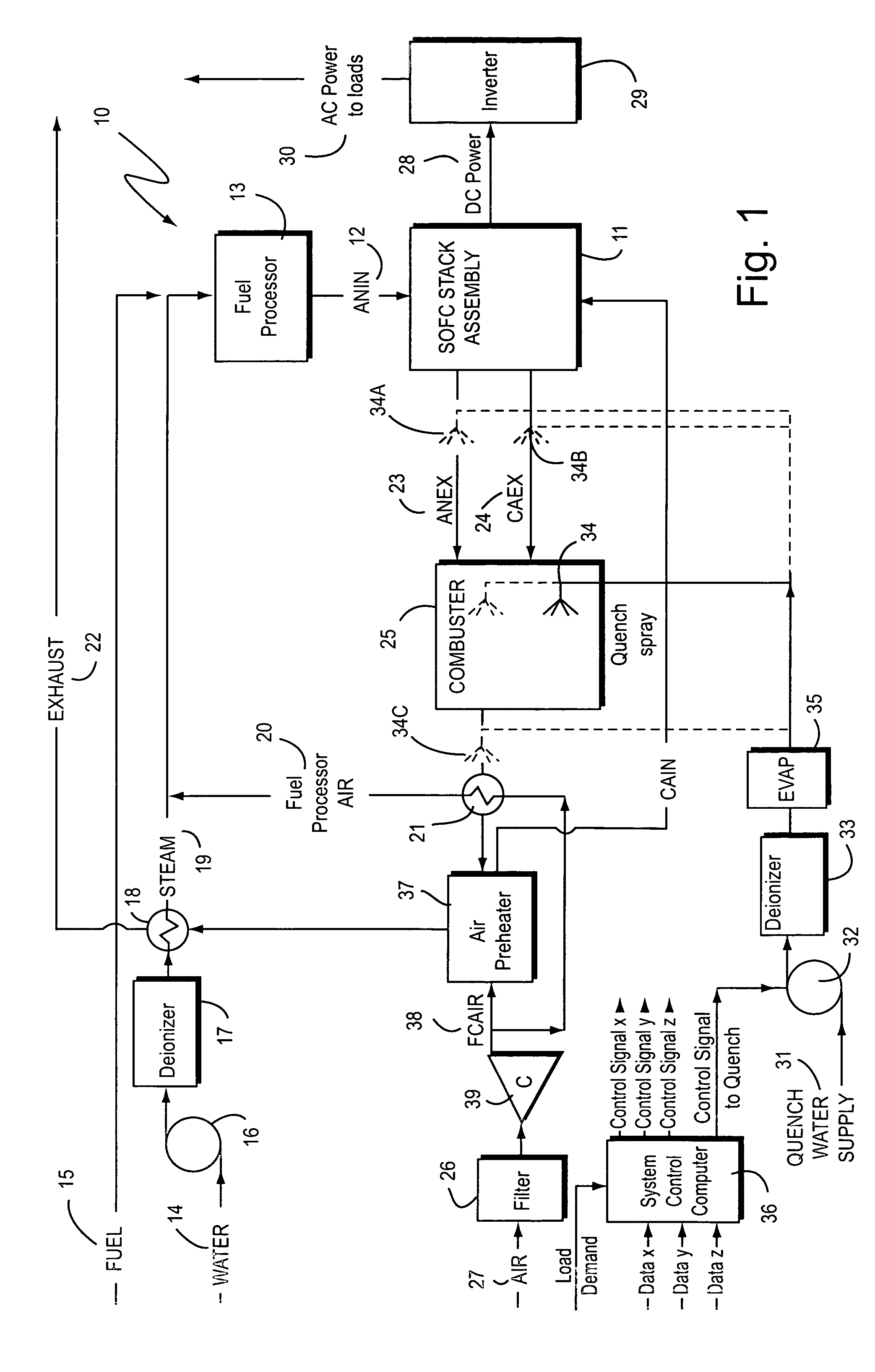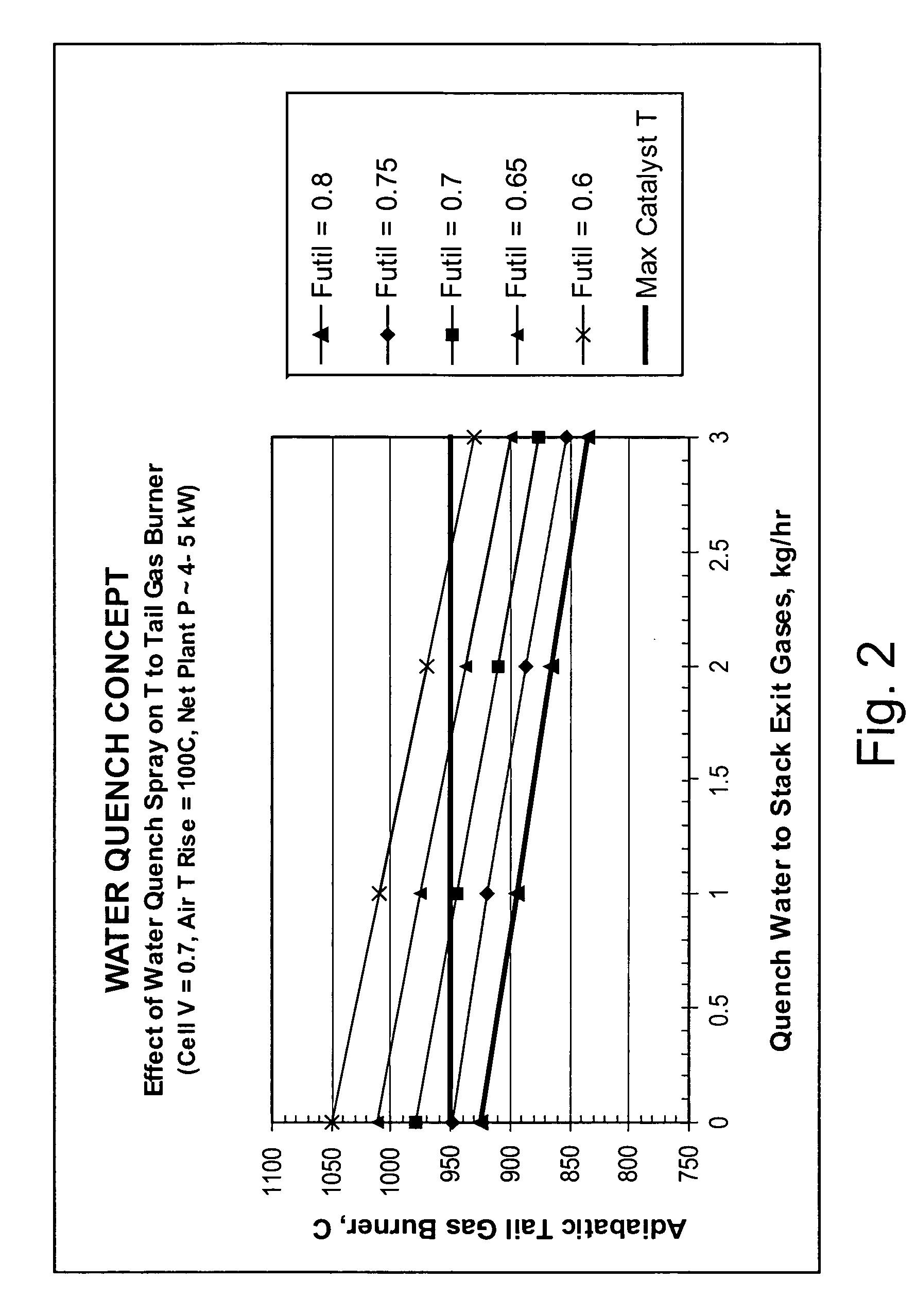High temperature protection of fuel cell system combustor and other components via water or water vapor injection
a fuel cell and combustor technology, applied in the field of fuel cell combustors, can solve the problems of long-term system reliability degradation, component or system failure, excessive high temperature in the burner, etc., and achieve the effects of reducing energy consumption, superior heat transfer and heat absorption characteristics, and reducing manufacturing costs
- Summary
- Abstract
- Description
- Claims
- Application Information
AI Technical Summary
Benefits of technology
Problems solved by technology
Method used
Image
Examples
Embodiment Construction
[0012]FIG. 1 is an example of a process flow schematic of a fuel cell combustor system 10 using the water or water vapor injection temperature control system and method of the present invention. System 10 includes a solid oxide fuel cell (“SOFC”) stack assembly 11 into which fuel 12, designated as “anode in” (“ANIN”), is inputted. The fuel 12 inputted to stack assembly 11 is produced by a fuel processor 13, which receives both fuel 15 and steam 19 to generate stack fuel 12. Steam 19 is produced from water 14, which is pumped by a pump 16 through a deionizer 17 into a heat exchanger 18. The deionized water is turned into steam 19 using heat from hot gas input into heat exchanger 18 from an air preheater 23. Steam 19 is also mixed with fuel processor air 20 produced by a second heat exchanger 21 receiving heat from hot gas from a fuel cell tail gas combustion chamber 25 connected to stack assembly 11.
[0013]Stack assembly 11 exhausts excess stack reactants, which include a fuel stream ...
PUM
| Property | Measurement | Unit |
|---|---|---|
| temperature | aaaaa | aaaaa |
| temperature | aaaaa | aaaaa |
| temperature | aaaaa | aaaaa |
Abstract
Description
Claims
Application Information
 Login to View More
Login to View More - R&D
- Intellectual Property
- Life Sciences
- Materials
- Tech Scout
- Unparalleled Data Quality
- Higher Quality Content
- 60% Fewer Hallucinations
Browse by: Latest US Patents, China's latest patents, Technical Efficacy Thesaurus, Application Domain, Technology Topic, Popular Technical Reports.
© 2025 PatSnap. All rights reserved.Legal|Privacy policy|Modern Slavery Act Transparency Statement|Sitemap|About US| Contact US: help@patsnap.com



